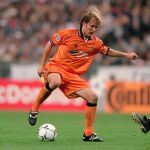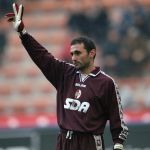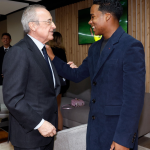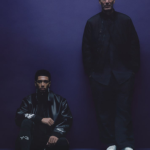
Leave the mark: Kelme's story
From the success of the 90s to the 2000 crisis, up to the agreement with Watford
May 19th, 2020
Gaizka Mendieta is remembered - for better or for worse - for various vicissitudes: in Serie A for that opaque season with the Lazio shirt (arrived as the second most expensive purchase in the history of Juventus), in Spain for his glorious years at Valencia and for the parenthesis to Barcelona; the British, on the other hand, when they think of him, they see him in the red Middlesbrough shirt and the younger ones probably recognize him only under the guise of a DJ. A few more careful eyes and some iron memories, however, associate Mendieta with a particular brand: Kelme.
In fact, the Basque midfielder during his career also wore the boots of the Spanish brand which, like him, reached the pinnacle of celebrity in the 90s and then gradually lost with the beginning of the new millennium. On some e-commerce stores you can still buy the Kelme shoes dedicated to him made of leather, black in color and with the characteristic K that stands out on the sides.
The rise
Kelme's story began in 1977 - even if the foundations had already been laid in 1963 - when the brothers José and Diego Quiles founded a small company that produced footwear in Elche, without imagining that within twenty years it would have become a millionaire multinational corporation. The coat of arms is now famous: the stylized black paw, under which the bold Kelme inscription stands out.
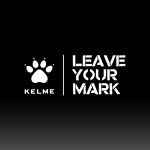
The visceral link with the world of sport was strengthened in 1979 when the Spaniards decided to concentrate their investments on sports shoes, finding their main output in cycling: in fact they decided to create and name a professional team that remained alive until 2006, year in which it was eliminated from the two-wheeled landscape due to the Operacion Puerto.
But this is already the waning phase of Kelme's history: in previous years, in fact, there had been a long period of ascent or, if you want to use cycling jargon, a climb.
From 1983 Kelme began to focus on sportswear, but the real affirmation of the black paw, linked to the world of football, occurred in the 90s, during which the Elche brand first came to dress the Colombian national team, a year later the Spanish one to get to ''put the foot'' on the camiseta blanca of Real Madrid in 1994. In Italy, however, we appreciated Kelme especially on the shirts of Turin, which wore the Spanish brand from 1996 to 2001.
The link with Real Madrid deserves a particular focus, surely the most famous team to have dressed Kelme for several years: in the summer of 1994 the Spanish paw takes Hummel's place on the shirts of the Blancos and designs some of the most iconic shirts of the years '90. Kelme accompanies Real Madrid until 1998, in a progressive rebirth path that leads the team to win the Septima, the seventh Champions League after the last one had been raised more than thirty years earlier, in 1966. In those four years have been produced sweaters destined to enter history both for their details, and for the players who have worn them, one name above all: Raul.
The fall
The brand crisis began in 2003 when budget problems surfaced following the revelations of former CEO Javier Vázquez-Doredo: after being fired, the manager revealed in court that the company had debts of 32 million euros and that there had been losses of over 5 million in the previous two years, a real hole considering that in 1998 Kelme had a turnover of 58 billion and that in 2001 they became ''only'' 38.
Despite the attempt by the Generalitat Valenciana to "rescue" it, in order to try to save Kelme, it gave a 9 million euro credit, Kelme also closed the Miami office led by the son of one of the Quiles brothers. In those difficult years, the black paw disappeared from practically all football shirts and the light at the bottom of the tunnel was only seen in 2008, when the Tirant Inversión took control of Kelme and brought the company back on the right tracks.
The re-born
To understand how Tirant Inversión has managed to change the fate of the brand, just take the statements of Carlos García Cobaleda, president of the Fund, who in 2012 said: ''This team is making possible the survival of a company that had died until three years ago. We considered this to be Tirant's most emblematic project and said we had to make a mark here''. Leave your mark, leave your mark, Kelme's leg that returns and takes on a new share: ''Last year (2011, ed) we closed with 13.5 million in turnover: when we entered in 2008 it only reached 4.5 million. We had sustained growth of 30%, and this in the worst economic moment in Spain and in the world''.
Kelme's growth continued over the following years, and the brand has gradually taken up the place it deserved within the panorama of sports brands: in the 2018/2019 season it was the most worn brand on the Spanish Liga uniforms (more than adidas and Nike), a few days ago is the news of the agreement of more than 11 million euros with Watford. The English club owned by the Pozzo family, in particular, focuses heavily on its new technical sponsor: the goal is to target new markets and sell 30,000 shirts every year.
#watfordfc x @Kelmesports pic.twitter.com/tC5rq3EXD6
— Watford Football Club (@WatfordFC) May 15, 2020
Kelme is now a solid reality in the world of sports and casual clothing, and has a privileged relationship with football. Technical sponsor of clubs all over the world, currently has agreements with several Spanish clubs including Espanyol, Dinamo Moscow in Russia, Hapoel Be'er Sheva in Israel and Colòn in Argentina, a club for which Kelme has thought of a shirt in honor of 115 years of history.
Not only football: as evidenced by the brand's official website, Kelme's footprint is also present in other sports, such as basketball, cycling, running and futsal. Finally, the Spanish brand has also opened a section entirely dedicated to padel, producing sweaters, pants, sweatshirts, hats and obviously rackets, also the latter with the usual, recognizable large paw in the center.











